Metal Powder Making Machine
SuperbMelt metal powder making machine helps you solve metal atomization issues
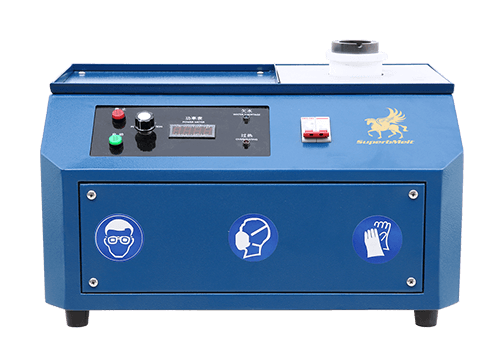
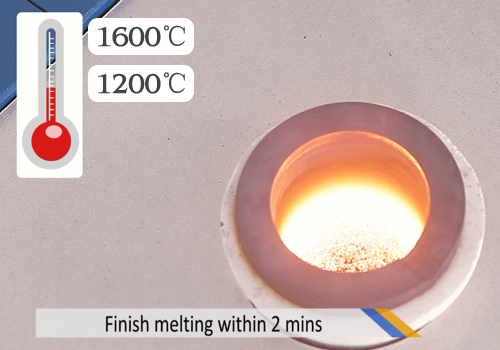
SuperbMelt Metal Powder Making Machine” is used to convert metals such as gold, silver, copper, platinum, palladium, and others into powder form. This powder-making process is typically employed in industries like metallurgy, powder metallurgy, and additive manufacturing (3D printing), enabling the production of finely powdered metals for various applications.
This process involves atomizing metal materials, reducing them into tiny powder particles. The resulting metal powders can be utilized in a variety of manufacturing processes. They play a critical role in various industries where the use of metal powders is essential for producing high-quality products.
- High Atomization Precision: Using this equipment, metal materials can be atomized with a high degree of accuracy, producing fine powder particles that are always the same size.
- Controlling particle size distribution allows for the production of metal powders with a range of sizes that are specifically suited to the needs of the application.
- High Efficiency: By efficiently turning molten metal into powder, atomization equipment reduces waste and energy use.
- Versatile Metal Compatibility: These machines are capable of processing a wide range of metals, including basic metals like copper and iron as well as precious metals like gold, silver, and platinum.
- High-quality and pure metal powders produced by atomization methods are essential for many applications, including advanced manufacturing and metallurgy.
- They have a wide range of applications, including powder metallurgy, additive manufacturing, and the creation of specialised alloys.
- Customization: A variety of metal powder manufacturing equipment can be altered to fit particular needs, such as creating powders with different alloy compositions.
- Reduced Oxidation: Atomization reduces the amount of time that molten metal is exposed to oxygen, which lowers the risk of oxidation and ensures the quality of the powders produced.
- Consistency: In industries where exact control over material qualities is essential, these machines deliver consistent and reproducible output.
- Environmental Benefits: Because atomization-based powder-making technologies use less energy and trash than conventional techniques, they are frequently more ecologically friendly.
| Model | SPB-VPM4 | SPB-VPM10 | SPB-VPM30 | SPB-VPM50 | SPB-VPM100 |
| Voltage | 380V | ||||
| Power | 45kw | 25kw | 50kw | 70kw | 100kw |
| Max Temperature | 1600-2600℃ | ||||
| Melting Time | 15-20Min | 20-25Min | |||
| Max Capacity | 4kg(Pt) | 10kg(Au) | 30kg(Au) | 50kg(Au) | 100kg(Au) |
| Applicable Metals | Au、Ag、Cu、Pt、Pd、Rh | ||||
| Milling specifications | 50-200Mesh | ||||
| Cooling Method | Water Cooling | ||||
| Milling Time | 20Min | 35Min | 60Min | ||
| Dimensions | 1500*1300*2100mm | ||||
| Weight | 800kg | 850kg | 900kg | ||
- Metallurgy: Metal powders produced through atomization are widely applied in metallurgical processes for alloy production, sintering, and the fabrication of powder metallurgy components.
- Additive Manufacturing (3D Printing): Atomized metal powders, characterized by their fine and consistent particle size distribution, are exceptionally suitable for rapid prototyping and manufacturing processes, including three-dimensional printing of metal components.
- Aerospace: The aerospace industry utilizes atomized metal powders to manufacture lightweight, high-strength components and parts, such as aircraft engine components.
- Automotive: Atomized metal powders find applications in the automotive sector for producing lightweight, durable components, including engine parts and chassis components.
- Electronics: Metal powders play a vital role in the electronics industry, where they are used to manufacture electronic components, conductive inks, and soldering materials.
- Medical Devices: Atomized metal powders are employed in the fabrication of medical devices, particularly for producing orthopedic implants, dental restorations, and surgical instruments.
- Energy Industry: Metal powders are integral to the production of energy-related components, including batteries, fuel cells, and thermal barrier coatings.
- Catalysts: Atomized metal powders serve as catalysts in various chemical processes, including catalytic converters used in the automotive industry.
- Powder Metallurgy: Atomized metal powders serve as crucial constituents in the powder metallurgy process, where they are pressed and sintered to create complex components.
- Research and Development: Atomized metal powders play a critical role in research and development activities, enabling scientists and engineers to explore new materials and applications.
- Jewelry and Art: Precious metal powders produced through atomization, known for their high purity and uniformity, are used in jewelry manufacturing and artistic casting.
- Defense and Firearms: Atomized metal powders are employed in the production of firearms and ammunition components due to their high quality and uniform characteristics.
Why SuperbMelt Metal Powder Making Machine



Any Question About SuperbMelt Metal Powder Making Machine
FAQ Guide of SuperbMelt Metal Powder Making Machine
1. How do you make metal into powder?
- Atomization: Atomization is one of the most widely used methods for producing metal powders. In this process, molten metal is forced through a nozzle or atomization chamber, where it is rapidly cooled using gas or liquid. The metal forms small droplets that solidify into powder as they cool. Atomization can produce fine and spherical metal powders, making it suitable for many applications.
- Mechanical Milling: Mechanical milling involves crushing and grinding bulk metal materials into fine powder using mechanical forces. This method is especially suitable for ductile metals like aluminum and copper. The process can be conducted using ball mills, attritor mills, or other milling equipment.
- Chemical Reduction: Chemical reduction methods involve chemical reactions to convert metal compounds or oxides into metal powders. For example, the reduction of metal salts using reducing agents such as hydrogen or carbon can produce metal powders. This method is often used for producing high-purity powders.
- Electrodeposition: Electrodeposition, also known as electrodeposition-reduction, involves depositing metal ions onto an electrode (usually a cathode) to form a metal powder. Electrodeposition can produce fine and controlled particle sizes and is often used for producing powders for electronic and magnetic applications.
- Gas-Solid Reaction: Some metal powders can be produced through gas-solid reactions, where metal vapor reacts with a gaseous reactant to form metal particles. This method is used for producing certain refractory metal powders.
- Hydriding-Dehydriding: This method involves hydriding a metal to form a metal hydride powder and then dehydriding the metal hydride to obtain the pure metal powder. This technique is used for metals that can form hydrides, such as titanium and zirconium.
- Spray Drying: Spray drying is a technique where a metal suspension or solution is atomized and sprayed into a hot drying chamber. As the droplets evaporate, solid metal particles are formed and collected. While this method is more commonly used for ceramics and polymers, it can be adapted for some metal powders.
- Plasma Spray: In plasma spray technology, a high-temperature plasma arc is used to melt and propel metal feedstock into a substrate, where it solidifies as fine metal particles. This method is often used for coatings but can also produce metal powders.
2. What is the most common method of producing metal powders?
The most common method of producing metal powders, particularly fine and spherical metal powders, is atomization. Atomization is widely regarded as the primary and preferred technique for manufacturing metal powders. Here’s a detailed explanation of why atomization is the most common method:
- Particle Size Control: Atomization allows precise control over the particle size distribution of the resulting metal powder. Manufacturers can adjust parameters such as nozzle design, gas flow rates, and cooling rates to produce metal powders with specific and consistent particle size ranges.
- Spherical Particle Shape: Atomization typically yields spherical or near-spherical metal particles. This spherical shape is highly desirable for many applications, including powder metallurgy, 3D printing (additive manufacturing), and thermal spray coatings, as it promotes excellent flowability and packing characteristics.
- Versatility: Atomization can be applied to a wide range of metals, including ferrous (iron, steel), non-ferrous (aluminum, copper), precious (gold, silver), and refractory metals (tungsten, molybdenum). It is adaptable to various metals and alloys.
- Production Efficiency: Atomization processes can achieve high production rates, making them suitable for large-scale metal powder production. This efficiency is essential for industries that require a significant volume of metal powder, such as the automotive, aerospace, and electronics sectors.
- Quality and Purity: Atomization processes can produce high-purity metal powders with consistent quality. This is crucial for applications where the properties of the metal powder must meet strict specifications.
- Adaptability to Feedstock: Atomization can be performed using various forms of feedstock, including molten metal, metal alloys, or metal preforms, depending on the specific requirements of the production process.
- Choice of Cooling Medium: Atomization can be carried out using different cooling media, such as inert gases (e.g., argon or nitrogen), water, or oil. The choice of cooling medium can be tailored to the specific needs of the metal being powdered.
- Industry Standard: Atomization has become an industry standard for producing metal powders, and it is widely recognized and accepted by manufacturers and end-users alike.
- Due to these advantages, atomization is the method of choice for producing metal powders for various industrial applications. It offers a high degree of control over particle characteristics and is well-suited to meet the stringent requirements of many industries. Other methods, such as mechanical milling and chemical reduction, are used for specific metals or applications where atomization may not be the optimal choice.
3. What is the process of powdering?
An approach known as atomization is used during the powdering process, particularly in the manufacture of metal powder. The process of atomization is frequently used to turn molten metal into tiny metal powder particles. A thorough explanation of the atomization procedure is provided below:
- The initial stage in atomization is to prepare the molten metal that will be converted into powder. Usually, to do this, solid metal is melted in a furnace to produce a pool of liquid metal. To ensure that the metal turns into a liquid, it is heated to its melting point.
- The metal is then moved to an atomization chamber while still in a molten state. This chamber has a nozzle or group of nozzles that are essential for dispersing the liquid metal into tiny droplets.
- The molten metal is pushed through the nozzle(s) in the atomization chamber at a high velocity during the atomization process. External forces, usually in the form of swift liquid or gas streams, are applied to the molten metal as it leaves the nozzle. The molten metal is broken up into small droplets by these streams’ quick cooling.
- Solidification: When the droplets are exposed to the cooling medium as they pass through the atomization chamber and are discharged from the nozzle, they quickly solidify. While remaining in the air, the metal droplets harden into tiny metal powder particles.
- collecting: Below the atomization chamber, in a collecting chamber or container, the fine metal powder particles are gathered. To get rid of any leftover gases or pollutants, the collection chamber could have filters or other equipment for separation.
- Sizing and Sorting: To make sure that the finished product complies with the necessary particle size distribution and quality standards, the collected metal powder may go through further processing procedures including sizing and sorting. This could entail categorising or screening the powder.
- Depending on the needs of the metal being powdered and the desired qualities of the finished powder, the atomization process can be carried out using a variety of cooling media, such as inert gases (for example, argon or nitrogen), water, or oil.
Guide of SuperbMelt Metal Powder Making Machine
Why Do You Need a Metal Powder Making Machine
A piece of machinery called a metal powder producing machine is used in many industries to turn bulk metal materials into finely powdered metal particles. Such a device may be necessary for a number of reasons, including:
Using metal powders to produce components and goods is a manufacturing method known as powder metallurgy. Metal powder production machines are frequently used to produce these metal powders. High-precision, complicated shapes and pieces can be produced with this method.
- Material Characteristics: Metal powders may have particular material characteristics that set them apart from bulk metals. Increased surface area, higher reactivity, and improved mechanical properties are a few examples of these qualities. Metal powders are utilised in a variety of processes, including additive manufacturing (3D printing), when the powder’s particular characteristics are necessary.
- Metal powders are used as feedstock materials in additive manufacturing (3D printing) to build three-dimensional things layer by layer. The fine powders required for 3D printing procedures like selective laser melting (SLM) and electron beam melting (EBM) are produced by metal powder manufacturing equipment.
- Metal powders are frequently used to make surface coatings that improve qualities like corrosion resistance, wear resistance, or thermal conductivity. These coatings can be used on a variety of goods and parts, such as automotive and aerospace components.
- Metal powders are frequently employed in the sintering process, which involves heating the powdered material until it fuses with one another to form solid things. Numerous goods, including automobile parts, cutting tools, and electrical components, are produced using this technology.
- In chemical processes, certain metal particles act as catalysts. These catalysts speed up chemical reactions without being consumed throughout numerous industrial operations.
- Research and Development: Metal powders are crucial for metallurgy and material science research and development projects. The properties of various metals are studied using these powders by researchers, who also use them to create new alloys with certain qualities.
- In conclusion, a metal powder manufacturing machine is a vital tool in sectors that need finely powdered metals for a variety of uses. These devices are essential for producing cutting-edge materials and components, whether it is for catalysis, surface coatings, additive manufacturing, powder metallurgy, or additive manufacturing.
How to Maintain SuperbMelt Metal Powder Making Machine
Maintaining a SuperbMelt metal powder making machine, or any similar equipment, is crucial to ensure its long-term performance, reliability, and safety. Here are some general maintenance tips for keeping your metal powder making machine in excellent condition:
- Read the User Manual: Always start by thoroughly reading and understanding the user manual provided by the manufacturer. The manual will contain important information on installation, operation, and maintenance specific to your machine model.
- Regular Cleaning: Maintain a clean working environment around the machine. Periodically clean the machine’s exterior and interior components to remove dust, debris, and metal particles that can accumulate over time. Make sure to turn off the machine and disconnect it from the power source before cleaning.
- Inspect Electrical Connections: Routinely check all electrical connections, wires, and cables for any signs of wear, damage, or loose connections. Faulty electrical connections can lead to operational issues and safety hazards.
- Lubrication: Some parts of the machine may require lubrication to reduce friction and wear. Follow the manufacturer’s recommendations regarding lubrication intervals and the type of lubricant to use.
- Inspect Moving Parts: Examine moving parts, such as conveyor belts, rollers, and bearings, for signs of wear and tear. Replace or repair any damaged components to prevent operational disruptions.
- Monitor Temperature: Keep an eye on temperature gauges, sensors, and heating elements to ensure they are functioning within the recommended operating range. Overheating can lead to equipment damage and safety risks.
- Inspect Filters: If your metal powder making machine has air or coolant filters, inspect and clean or replace them as needed. Proper filtration helps maintain the quality of the metal powder and prevents contaminants from entering the system.
- Calibration: Periodically calibrate any sensors or measuring devices to ensure accurate and consistent results. Follow the manufacturer’s instructions for calibration procedures.
- Safety Checks: Regularly inspect safety features such as emergency stop buttons, safety interlocks, and safety guards. Ensure that they are in good working condition to protect operators and prevent accidents.
- Scheduled Maintenance: Establish a maintenance schedule that includes routine inspections, cleaning, and preventive maintenance tasks. Adhere to this schedule to prevent unexpected breakdowns and costly repairs.
- Training and Operator Knowledge: Ensure that the operators and maintenance personnel are adequately trained in the safe and proper operation of the machine. Proper training can help prevent accidents and equipment misuse.
- Record Keeping: Maintain detailed records of maintenance activities, repairs, and any issues encountered. This documentation can be valuable for troubleshooting and warranty claims.
- Professional Servicing: When faced with complex repairs or issues, consider hiring a qualified technician or contacting the manufacturer’s service department for assistance.
Remember that the specific maintenance requirements for your SuperbMelt metal powder making machine may vary based on the model and usage conditions. Always refer to the manufacturer’s guidelines and recommendations for your specific equipment. Regular and proactive maintenance will help extend the lifespan of your machine and ensure consistent, high-quality metal powder production.

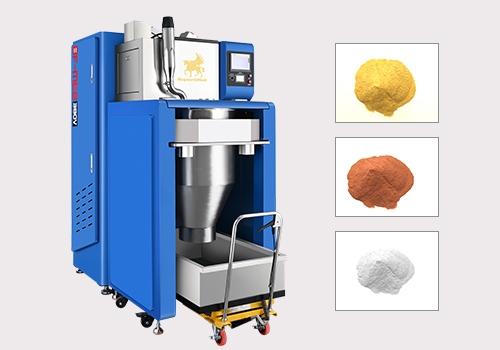
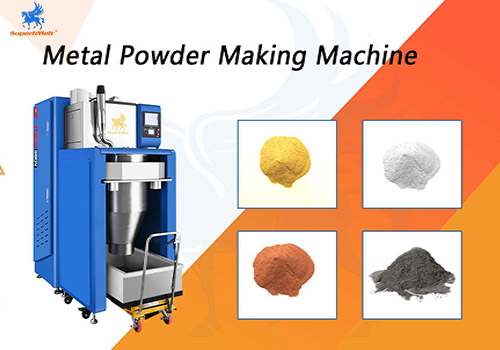
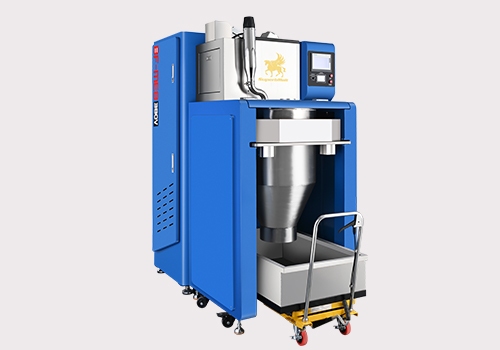
 © Copyright 2008-2021 Superb Electromachinery Co., Limited
© Copyright 2008-2021 Superb Electromachinery Co., Limited